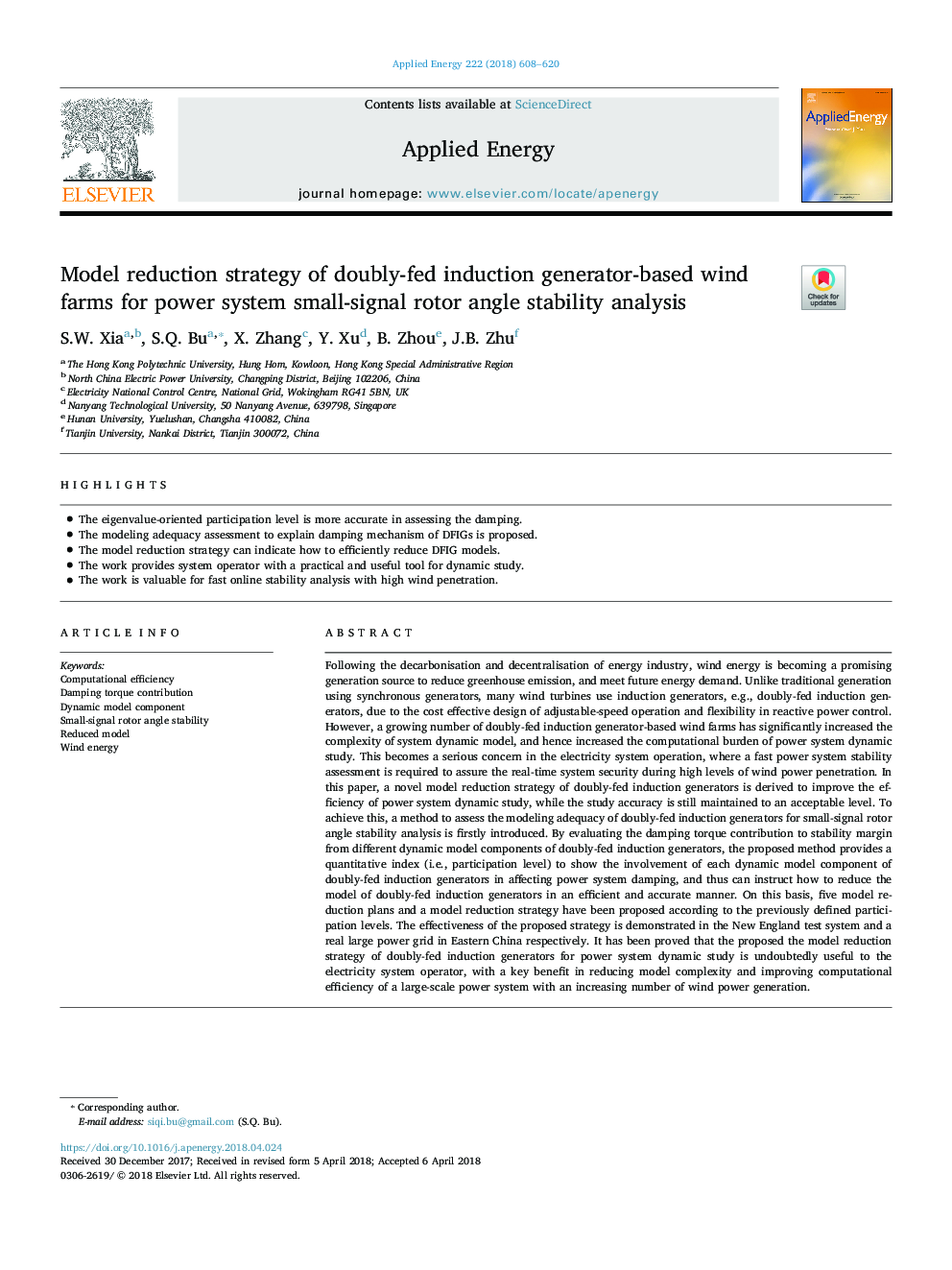| Article ID | Journal | Published Year | Pages | File Type |
|---|---|---|---|---|
| 6680218 | Applied Energy | 2018 | 13 Pages |
Abstract
Following the decarbonisation and decentralisation of energy industry, wind energy is becoming a promising generation source to reduce greenhouse emission, and meet future energy demand. Unlike traditional generation using synchronous generators, many wind turbines use induction generators, e.g., doubly-fed induction generators, due to the cost effective design of adjustable-speed operation and flexibility in reactive power control. However, a growing number of doubly-fed induction generator-based wind farms has significantly increased the complexity of system dynamic model, and hence increased the computational burden of power system dynamic study. This becomes a serious concern in the electricity system operation, where a fast power system stability assessment is required to assure the real-time system security during high levels of wind power penetration. In this paper, a novel model reduction strategy of doubly-fed induction generators is derived to improve the efficiency of power system dynamic study, while the study accuracy is still maintained to an acceptable level. To achieve this, a method to assess the modeling adequacy of doubly-fed induction generators for small-signal rotor angle stability analysis is firstly introduced. By evaluating the damping torque contribution to stability margin from different dynamic model components of doubly-fed induction generators, the proposed method provides a quantitative index (i.e., participation level) to show the involvement of each dynamic model component of doubly-fed induction generators in affecting power system damping, and thus can instruct how to reduce the model of doubly-fed induction generators in an efficient and accurate manner. On this basis, five model reduction plans and a model reduction strategy have been proposed according to the previously defined participation levels. The effectiveness of the proposed strategy is demonstrated in the New England test system and a real large power grid in Eastern China respectively. It has been proved that the proposed the model reduction strategy of doubly-fed induction generators for power system dynamic study is undoubtedly useful to the electricity system operator, with a key benefit in reducing model complexity and improving computational efficiency of a large-scale power system with an increasing number of wind power generation.
Related Topics
Physical Sciences and Engineering
Energy
Energy Engineering and Power Technology
Authors
S.W. Xia, S.Q. Bu, X. Zhang, Y. Xu, B. Zhou, J.B. Zhu,
